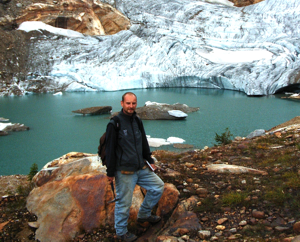Biography:
My geological career commenced in October 2002 at the Institute for Geology and Palaeontology at the Julius-Maximilian University of Wuerzburg (Germany). After five years of undergraduate and graduate studies I received my diploma degree in Geology in the winter of 2007.
While my undergraduate studies emphasized geological mapping, structural analysis and petrography, my focus turned to economic geology and mineralogy after my pre-diploma. As an undergraduate student I completed a geological and structural mapping project around a diatreme in southern Germany for the County of Bad Kissingen under the supervision of Prof. Volker Lorenz.
Shortly after my pre-diploma, I went to South Africa to conduct a two-month mapping project as partial fulfillment of the diploma degree. This was supervised by Prof. Reiner Klemd (University of Wuerzburg, Germany) and Prof. Jay Barton (then Rand Afrikaans University, South Africa) and was sponsored by DeBeers Consolidated Mines. The aim was to investigate the regional (structural) geology around the DeBeers Venetia kimberlite pipes, which are situated within locally confined nappe structures in the high-grade gneisses of the Limpopo Belt.
After this mapping project, and before commencing my diploma thesis, I spent time as an intern at the Federal Institute for Geosciences and Natural Resources in Hannover (Germany). Here, I was responsible for the petrologic characterization and classification of PGE-bearing (historic) samples from ultramafic pipes from the Bushveld Complex (South Africa), with an emphasis on the mode and occurrence of the PGE-alloys.
After this I focused on my diploma thesis, which dealt with the tectonometamorphic evolution of my mapping area. Detailed petrographic examination together with thermodynamic calculations (P-T pseudosections) allowed me to construct pressure-temperature paths for three different lithologies from this area. The scope of the thesis was extended and geochemical investigations of amphibolites and geochronological studies of metamorphic monazite were included to cover all aspects of the geological record.
Based on my experiences in industry during my studies I decided to continue my career in a direction where I can combine scientific research with industry. Shorty after being admitted to the Ph.D. program at the University of British Columbia I was working for Dahrouge Geological Consulting as a geologist in the exploration sector. During my time in Blue River, BC, I became familiar with the industry and the rocks that will be the subject of my research for the next few years. After my Ph.D. I plan to pursue a career in British Columbia, since crucial factors such as the mining industry and the research expertise are concentrated here.
